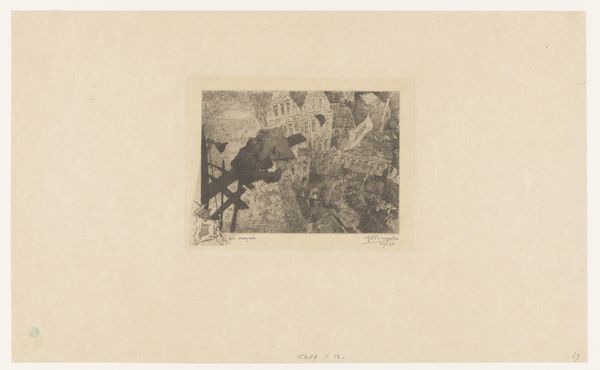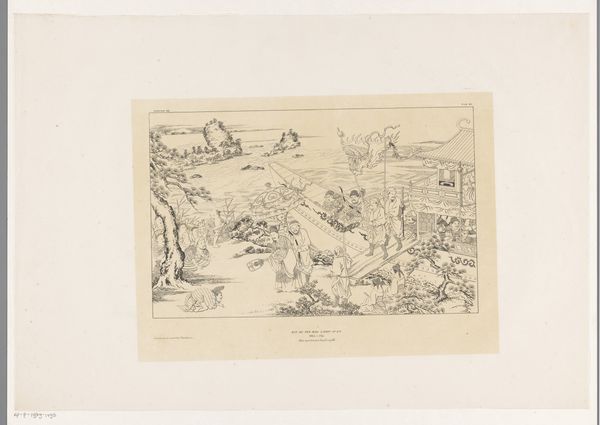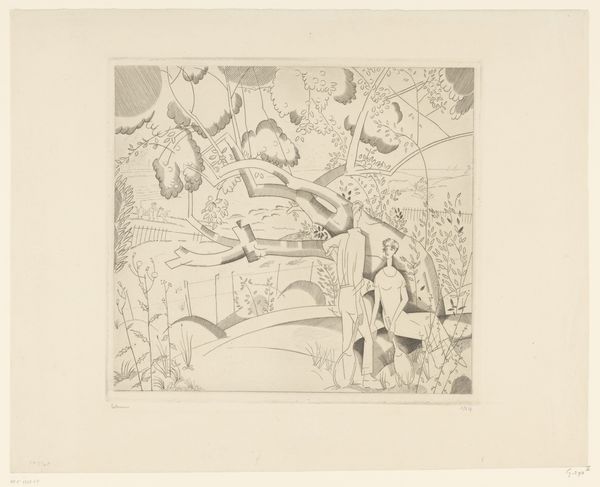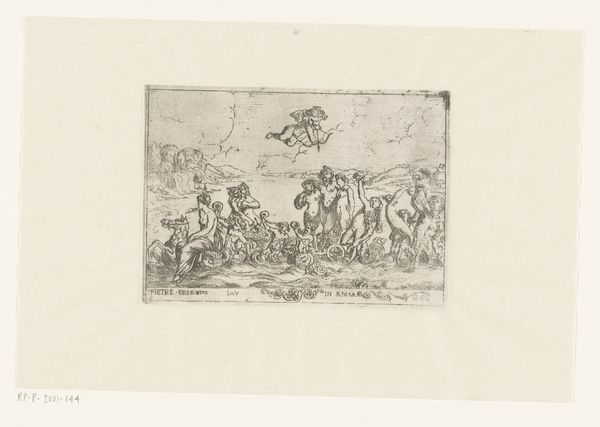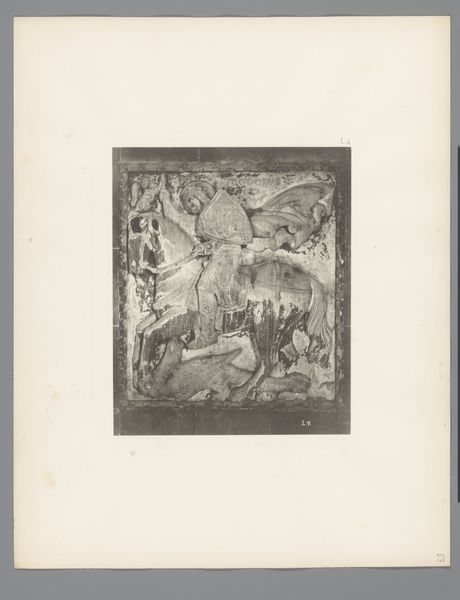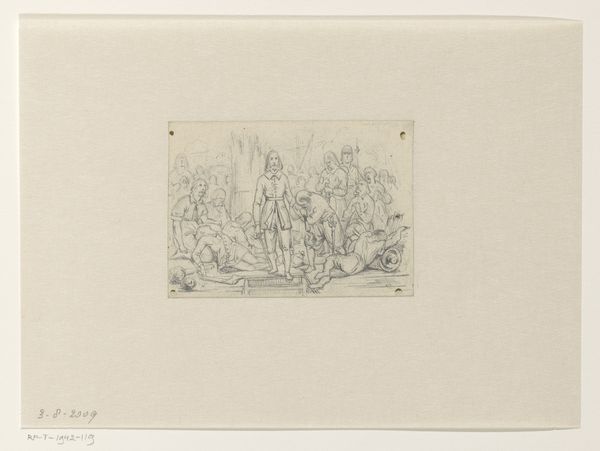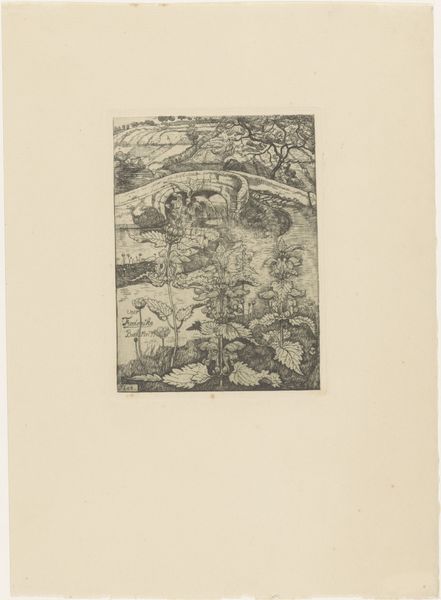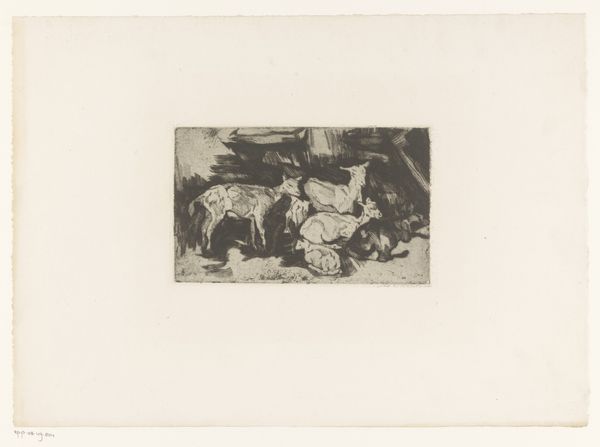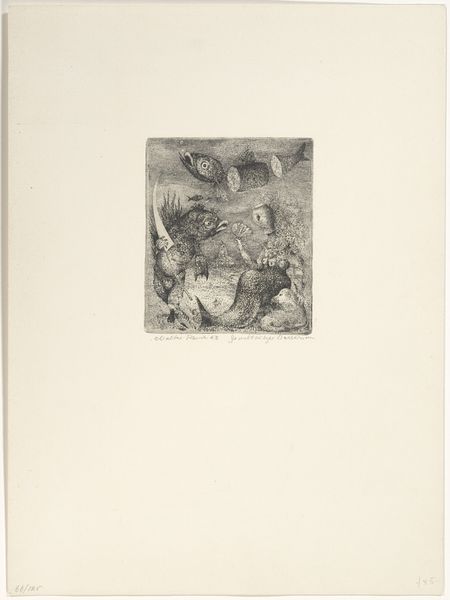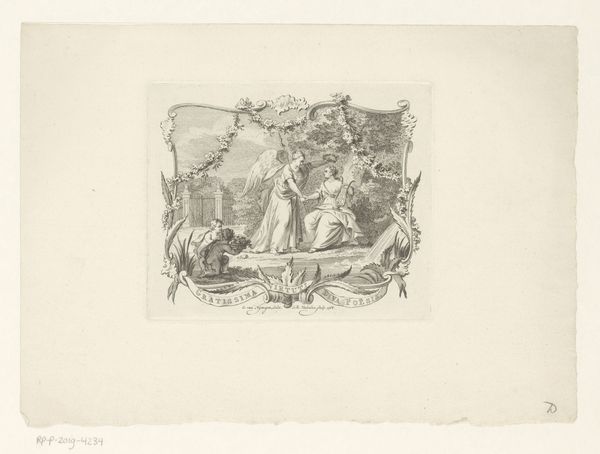
Fotoreproductie van het fresco Trionfo della Morte in het Camposanto te Pisa, Italië 1851 - 1900
0:00
0:00
print, fresco, photography
# print
#
fresco
#
11_renaissance
#
photography
#
history-painting
Dimensions: height 309 mm, width 385 mm
Copyright: Rijks Museum: Open Domain
Curator: This photographic print offers us a glimpse of the fresco "Trionfo della Morte," or "Triumph of Death," located in the Camposanto in Pisa, Italy. This photo reproduction likely dates from between 1851 and 1900. Editor: It feels almost ghostly. That sepia tone gives the scene a kind of distance, like we’re looking at a memory or a faded dream about the plague. There's so much happening, it's visually overwhelming. Curator: Indeed. The original fresco, attributed to Buonamico Buffalmacco, was created during the 14th century. It’s a significant artwork because it visually captures the social and political anxieties of a society ravaged by plague and economic hardship. We should see it as a commentary on class, divine judgment, and mortality. Editor: Definitely. It's split into these different registers of suffering. You have the piles of corpses, which feels ripped straight from someone's nightmare, and then, bizarrely, there are these aloof-looking aristocrats who don't seem to notice any of it. Curator: Precisely. And then, looming over it all is Death herself, or rather, the allegorical figures associated with death, raining down destruction. There's a sense of inevitability to it, that death doesn’t discriminate between rich or poor. It uses powerful visual language to address inequality, wouldn't you say? Editor: Oh, for sure. Though even in the photographic reproduction, that symbolic weight kind of flattens out. Maybe because the chaos feels staged. Do you get what I mean? Like the composition, all the winged demons—it borders on theatrical. I'd be curious how this was displayed and regarded back in the day! Curator: Absolutely, understanding the display context—the Camposanto itself and its function as a burial ground—is crucial. Placing the "Triumph of Death" in that setting underscores the memento mori tradition, prompting viewers to reflect on their own mortality and the transience of earthly life. The layered class dynamic is definitely worthy of discussion today, because it brings forward the discourse around who is spared when catastrophe occurs. Editor: I suppose that's the grim staying power of the piece! It feels relevant now in ways I wish it didn’t. Curator: Precisely. Art like this encourages those critical conversations about then and now, and about those inequalities we keep grappling with. Editor: And what's captured here—that morbid theatricality, the fear, that desire to forget mortality—says so much about the people viewing it.
Comments
No comments
Be the first to comment and join the conversation on the ultimate creative platform.

